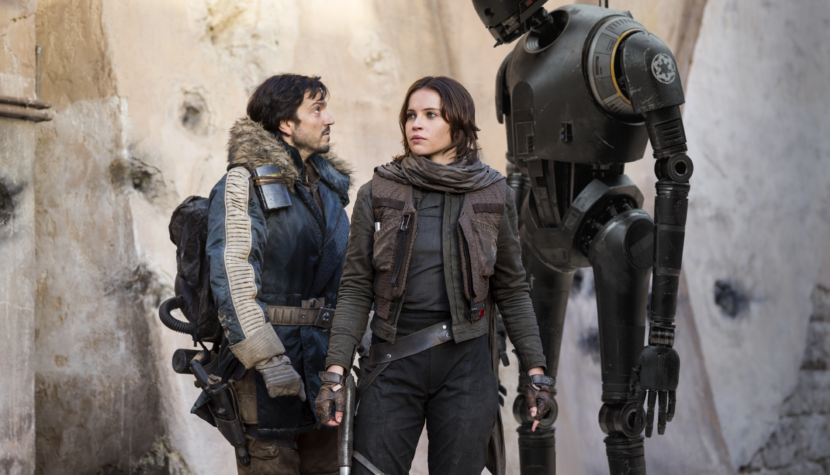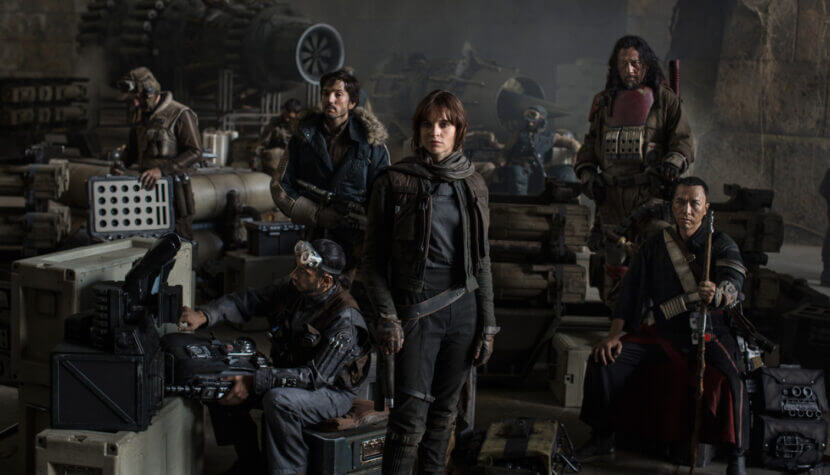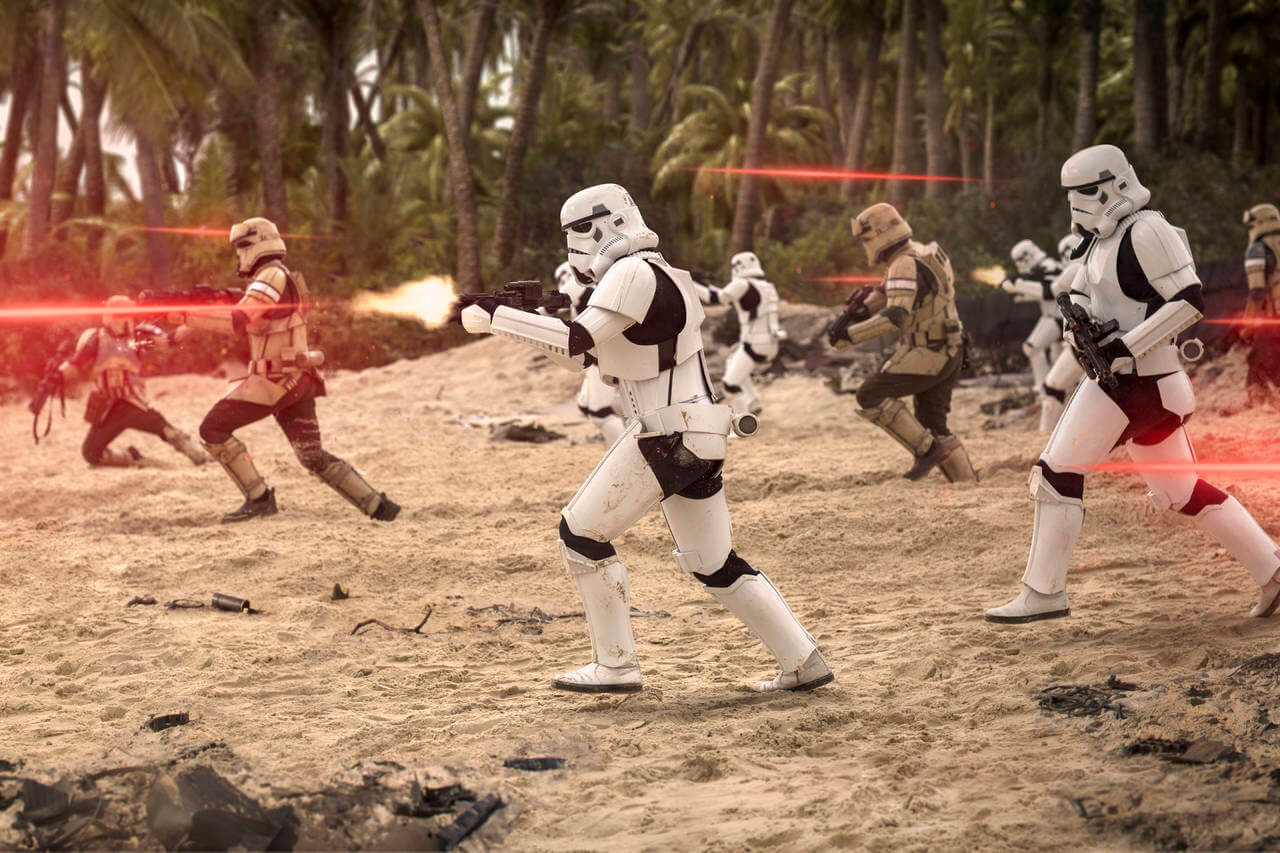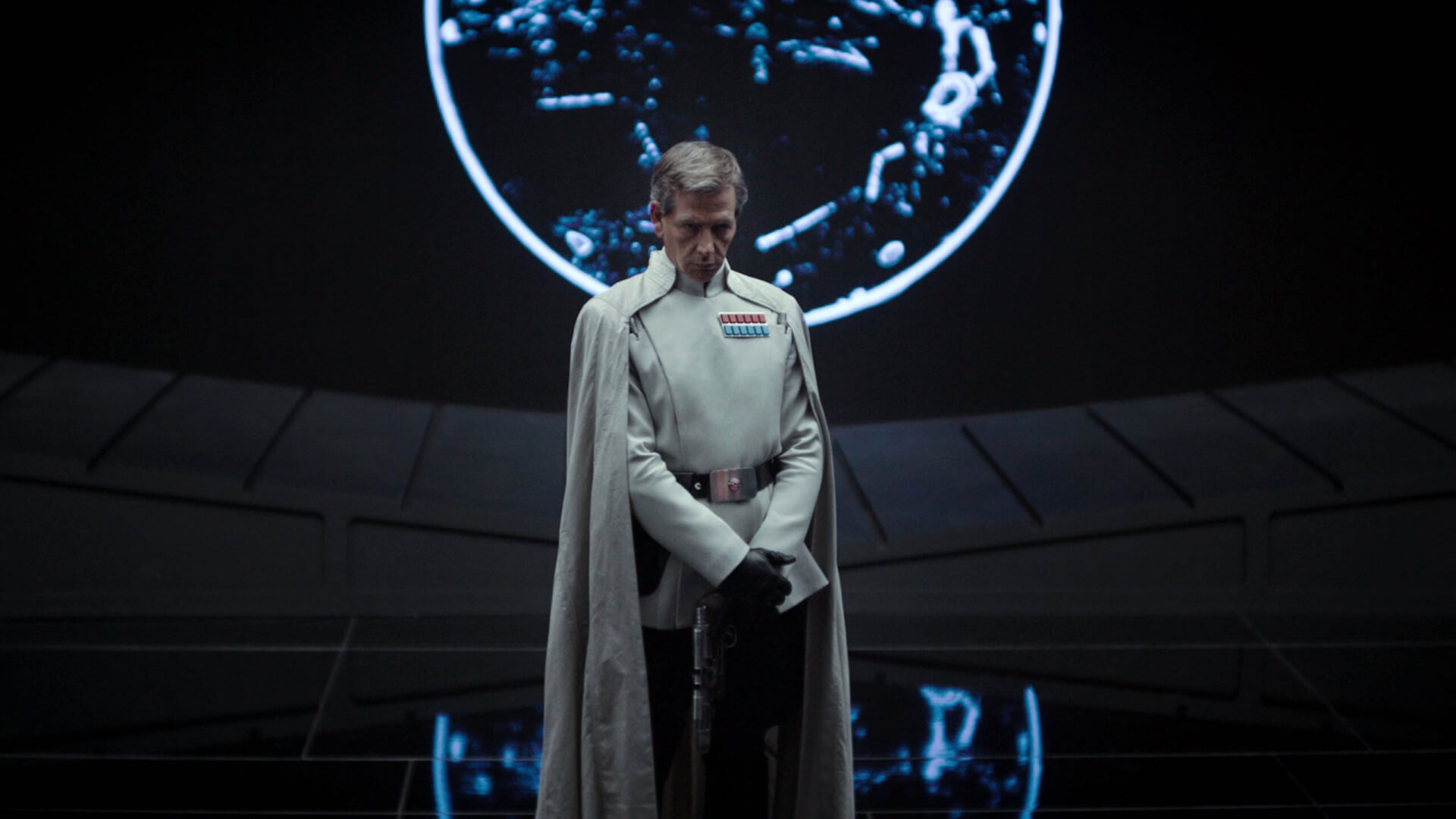ROGUE ONE: A STAR WARS STORY. New level of quality

With Rogue One, there were certain problems in the planning phase, as Disney initially didn’t quite know how to approach the first high-budget spin-off of the Skywalker family saga – a saga characterized by its never-ending soap opera. Later, during production, various undefined tensions arose between director Gareth Edwards and the studio – and anyone who has seen 2014’s Godzilla knows that this promising creator has a strong penchant for modifying established patterns.
In the end, it turned out that both the wolf and the sheep were satisfied because Disney retained the recognizable structure of the saga, its essential elements, and its mythology steeped in power, while Edwards managed to introduce a significant number of interesting solutions and leave his unique mark on the franchise.
The starting point of the story is simple but highly effective as it hits the perfect moment in the saga, just before its grand (original) opening. Thirty-nine years ago, viewers began their space adventure with Leia, who passed the Death Star plans to Obi-Wan Kenobi, and in Rogue One, we learn how they ended up in the hands of the rebels. Superficially, the story also revolves around Galen Erso, the creator of the destructive machine, and his daughter Jyn. Fortunately, family issues do not dominate the screen this time, and in the light of the stars, the dirty showdown between the Empire and the Rebellion takes center stage.

The creators aren’t trying to reinvent the wheel here but aim to sensibly expand the Star Wars mythology and introduce new elements instead of rehashing the same old story. The action unfolds rather slowly and takes a while to find its rhythm, making the first act somewhat chaotic. However, this is compensated for by a fresh and interesting perspective on the sides of the conflict. The Rebellion is no longer just a band of spiritual warriors fighting for freedom; it’s now a fragile alliance with coordinators who are tired desperados, calculating every move. Those assigned to the dirty work have no qualms about stabbing their comrades in the back if the situation demands it because the end justifies the means. On the other hand, the Empire is a corporate nightmare where everyone wants to please their boss and climb the corporate ladder. Additionally, the director takes viewers to entirely new locations – we see cosmic slums, rain-soaked rocky bases, and an almost paradise-like island – opening new doors for the expanded universe. Throughout, the creators stay true to the core of the story, which is the pursuit of the plans, ensuring that the action, once it picks up, never loses its dynamism.
The well-crafted military sequences are what truly captivate the audience and are the most distinctive addition by Edwards. The director seems to have won some kind of battle with the studio because he may not have been allowed to create a full-fledged war film in the Star Wars universe, but he managed to emphasize this element in the saga. The battles here are meticulously designed, with concrete choreography and outstanding cinematography by Greig Fraser. The exploding AT-ATs, seen from a bird’s-eye view, haven’t fallen so well since The Empire Strikes Back. The action scenes are spectacular but not excessively over-the-top, and there’s no room here for wild blaster shootouts that the saga is known for. The skillful transitions between action locations keep things fluid, and each character has a specific role, making the war chaos surprisingly logical. It’s simply a visually stunning film that sets itself apart from J.J. Abrams’ visual acrobatics in The Force Awakens, providing a new level of quality.

In terms of the plot, we don’t get any Oscar-worthy material here, but rather a familiar story about a mismatched group of vivid individuals embarking on an apparently impossible mission.
There are some script simplifications and a few obligatory fiery speeches (in the spirit of the classic trilogy, where hope, sacrifice, and the desire for freedom were the elements binding the characters’ relationships), but the creators serve us a healthy dose of thrilling adventures and more serious themes. The weight of the entire conflict is constantly present for the characters. Edwards handles this world and its characters without much ceremony, but war is hell – perhaps Disney-fied hell, without the guts and gore, but intense in scope and impact.
In the style of The Dirty Dozen, the story lives not so much through its plot but through its characters, and the team in Rogue One is well-assembled. The group resembles a party from an RPG game (rogue, spy, paladin, warrior, engineer), but the characters are well-defined – each undergoes some transformation during the film, and their personalities are defined through their actions, without unnecessary exposition. The rebels are simply a group of professionals – thankfully, there’s no future Messiah here. This tale of the cogs of the machine, right from the battlefield, is a refreshing change from various mystical experiences.

No one stands out in any particularly special way (although K-2SO the droid steals many scenes), but it’s hard to fault any of them – it’s a very solid ensemble cast. The cherry on top is the clash of characters: Ben Mendelsohn as the main villain responsible for coordinating the construction of the Death Star (somewhat clichéd but played with charming grace) and the CGI-recreated Peter Cushing as Tarkin (the uncanny valley still haunts at times, especially around the eyes, but technology has come a long way since the terrifying young Jeff Bridges in Tron: Legacy). Added to that is a genuinely spectacular (and meaningful) appearance by one of the classic villains, making the Empire’s actions a pleasure to watch.
Ultimately, Rogue One: A Star Wars Story is a very good action film that oozes the grandeur of the Star Wars mythology at every turn. Edwards introduces many new elements to the iconic world, strives to infuse fresh formal solutions within conventional boundaries, such as well-thought-out military battles (which I hope will be embraced in future productions), and plays with emotions, vividly delineating the highs and lows of the Rebellion’s actions. It is by no means a perfect film but serves its purpose as an engaging interlude between numbered episodes. And incidentally, it provides emotional thrills, making it a worthy addition to the classic trilogy marathon.


